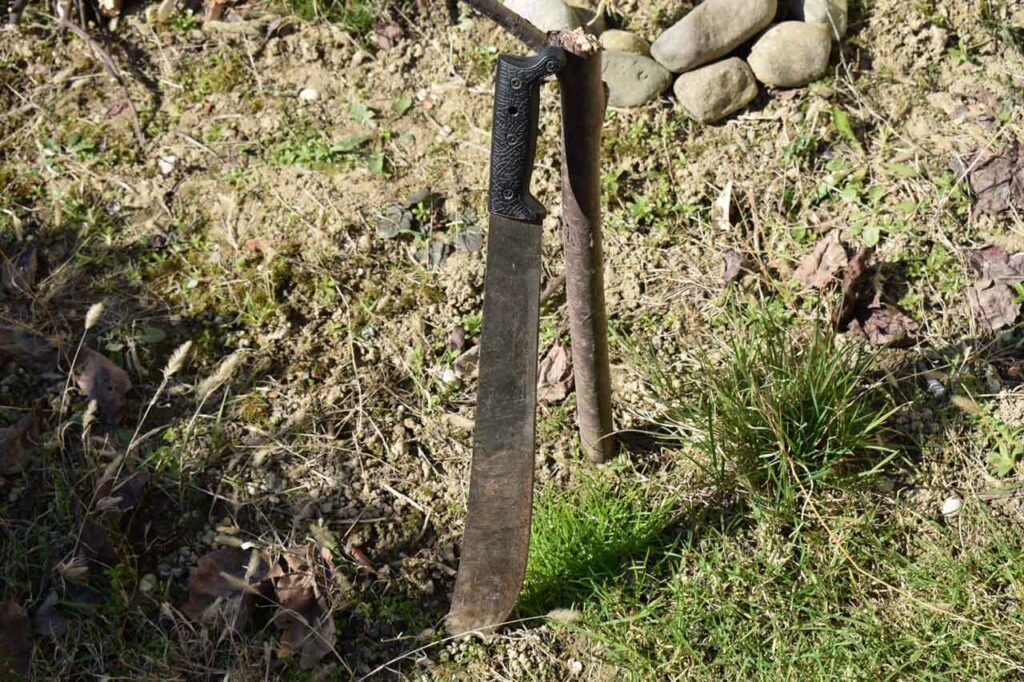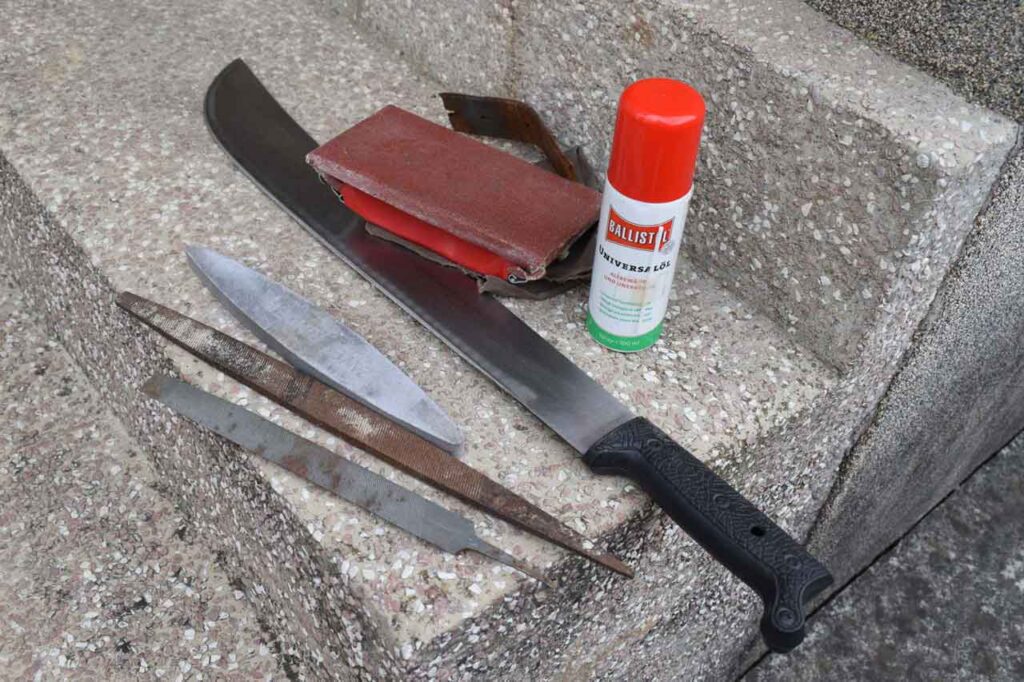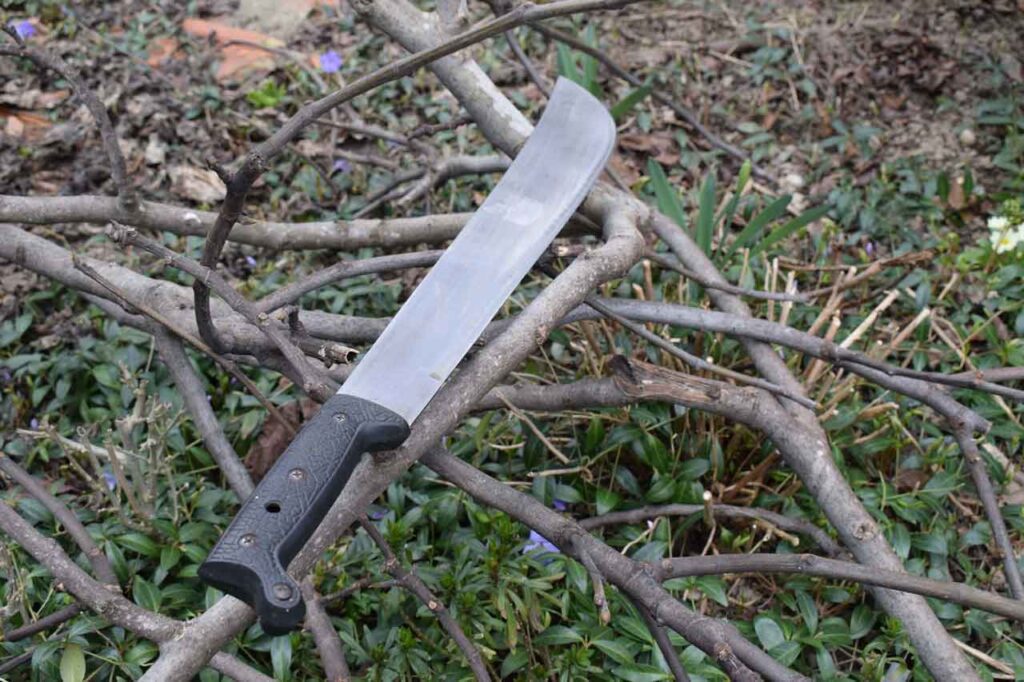Best Working Mans Machetes
Best Machetes and Why Everyone Should Own One
I am Biased. Thought I should get that out of the way. When I was young, my dad got me a machete and a couple of years later a hatchet. I spend hours learning to throw that little hatchet, it was a ton of fun. But in the jungles of Asia, a machete is the tool you want. I practically grew up traipsing through the jungles of Asia with my trusty machete. Here are a list of the Best Machetes.
Having chopped wood to built shelters, cleared jungle trails, gutted fish, opened coconuts, used the machete as a weapon of self-defense against wildlife, and processed wood for a fire. These are just some of the tasks my trusty machete has performed.
A machete can perform many of the tasks a hatchet or small axe can, and many of the tasks a large knife can as well. This effectively combines the abilities of 2 tools into one. In many cases, a good machete can outperform an axe. Except when it comes to chopping down large trees of course.
I have used a machete for decades for various tasks and have tested various designs, lengths, materials, and, weights.
the Working Mans best Machetes, Tried and Tested:
Tramontina Machete Wooden Handle
A working man’s machete, 18″ of carbon steel blade with a wooden handle, this machete is a no-frills tool, it doesn’t come very sharp, but once sharpened, it holds an edge reasonably well. Relatively light for its size, it makes quick work of brush, shrubs, and small saplings.
I have cut down a small tree with the Tramontina (an axe would have been faster), it was doable, limbing the tree was faster with the machete than with an axe.
Pros
Durable, cheap, good steel, well designed for work.
Cons
Comes without a Sheath, factory edge isn’t consistent.
Ontario 1-18 Military Machete
For over half a century the Ontario Knife Company manufactured the 1-18 machete under the US Governments specifications, this machete was designed for hard use, adverse conditions, and pure functionality.
The 1095 carbon steel blade does require some looking after, it needs to be oiled or it will rust, this machete can take a beating. it holds an edge reasonably well ( although the factory edge is lacking, so touch up before use). Be aware that when the handle is wet it does get a little slippery (wrap some cloth tape on it), but once you address these issues, it works like a charm, the weight gives it excellent chopping power.
Pros
Durable, cheap, Solid build, full tang,
Cons
Sheath sold separately, poor factory edge, the handle is a little slippery when wet.
Kershaw Camp 10
The Kershaw camp 10 is a solidly build machete, 65Mn steel 10′ inches long with a decent rubber grip. The hard sheath is well designed with sufficient lashing points to tie it down to any pack.
The Kershaw camp 10 is a well-designed chopper, but, and this is a big but.. for those used to wielding an Asian or Brazilian style machete. Care must be taken, this is a harder and less flexible machete, it does hold an edge better, but it does chip easier than a Tramontina. Think of this machete as a long fixed-blade and you will be happy with your purchase.
I liked the 18″ version better, but sadly that was discontinued.
Pros
Solidly built, comfortable handle, multiple carry options
Cons
Quality control issues, the sheath is noisy
Condor Golok Machete
A solidly build machete, designed for chopping, a heavy 14″ blade crafted of high carbon steel, Indonesian design this is very much a machete meant for chopping medium-sized branches and brush, not so much for light weeding or tall grass (a lighter machete would be better suited for that).
The walnut handle is very comfortable, the blade is high carbon steel so does require oiling, since this is a chopping machete, the blade does not come razor-sharp, so a touch-up might be necessary depending on your preference. Very nice leather sheath.
Pros
Solid build, great leather sheath, comfortable handle.
Cons
Expensive, a little bit short, heavy for its size.
Ka-bar Kukri Machete
The Kukri design is legendary, most survivalists, preppers, and bushcrafter will have tested one of these out at one time or another. Originally from Nepal, the Gurkhas used this as not only a tool but also as a weapon.
Due to its design, it is a great chopper, Kukris are usually thicker bladed than other Machetes and heavier. They can handle a decent amount of abuse. Think of the Kukri as a middle ground between a machete and a small hatchet.
The Ka-bar Kukri has an 11.5″ blade, Plastic handle with decent ergonomics. the sheath is…functional. Once you pick this up, you can feel that it is meant for chopping. Chopping medium-sized branches is a breeze, processing firewood, no problem, chopping down a sapling to create a makeshift shelter.
What it does not excel at is clearing a path through a rain forest, or jungle, the blade is too short for that.
Pros
Solid build, good heft, comfortable handle
Cons
Sheath (full leather would have been great)
The Difference Between a Knife and Machete


The difference is that a knife is meant to be used as a cutting tool, while a machete is meant to be used as a chopping tool.
Of course, some people use a knife to chop with and a machete to cut with. But the designed intent is what defines the tool.
With that in mind, a machete is usually quite long ranging from 10″ to 26″ to give it more chopping power. While a knife is usually shorter so that it can be effectively wielded as a cutting tool.
How to Use a Machete

A machete is meant to be a light chopping tool, a good swing and short flick of the wrist works well. I have seen many people hold and swing a machete the same way they would an axe. Which is fine if you are chopping down a small tree with it. But not optimal for its design.
I have read numerous reviews on the net where people complained that their machetes chipped. After hitting stone, cement, or some similarly hard object. They then complained that the machete was faulty or of inferior quality. The Machete was not designed to hit stones or rocks, the same way an axe was not designed to chop cement. Look after your tools and your tools will serve you well.
Machetes in Jungles and Swamps
If you live or are planning a trip to a jungle or a swamp, then I would highly recommend packing a machete in your Bug-out bag, instead of an Axe.